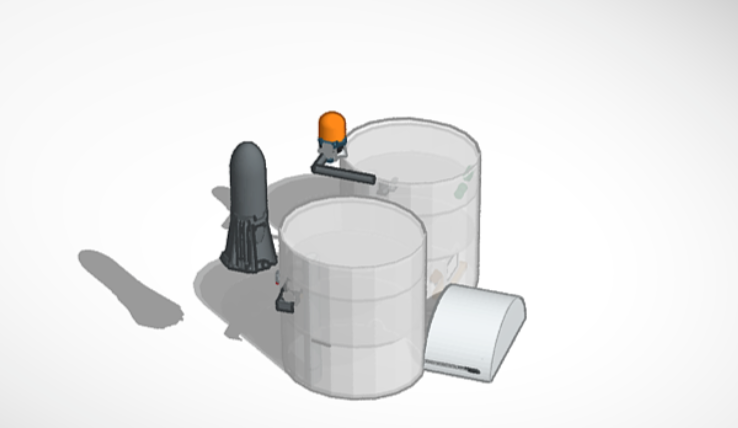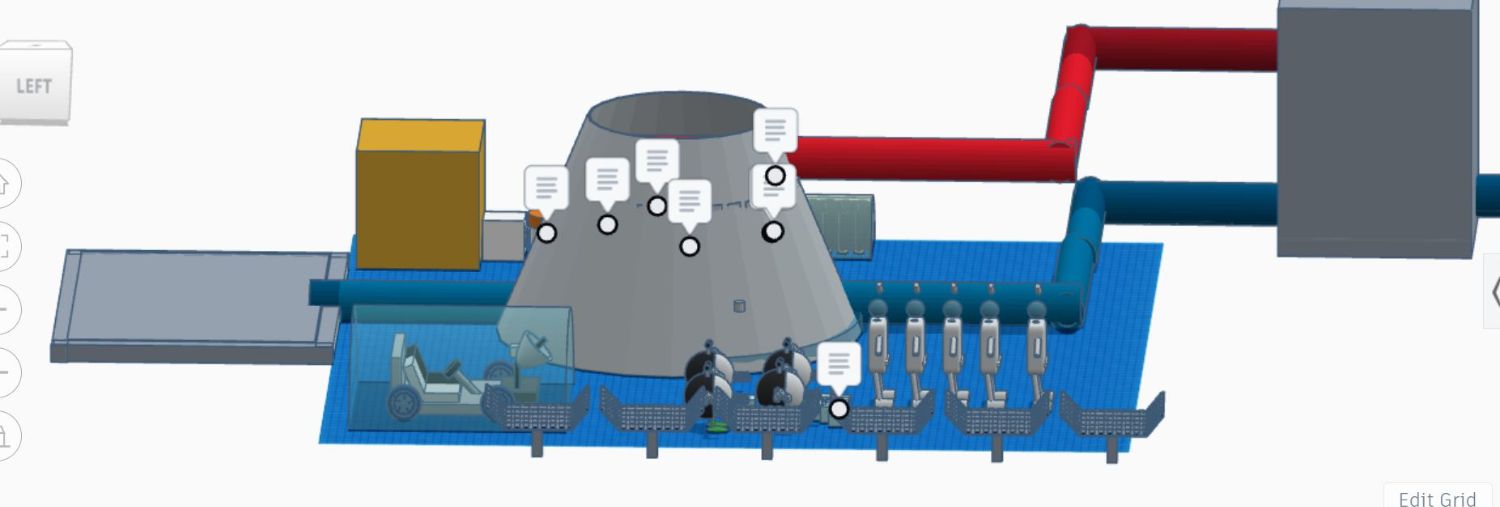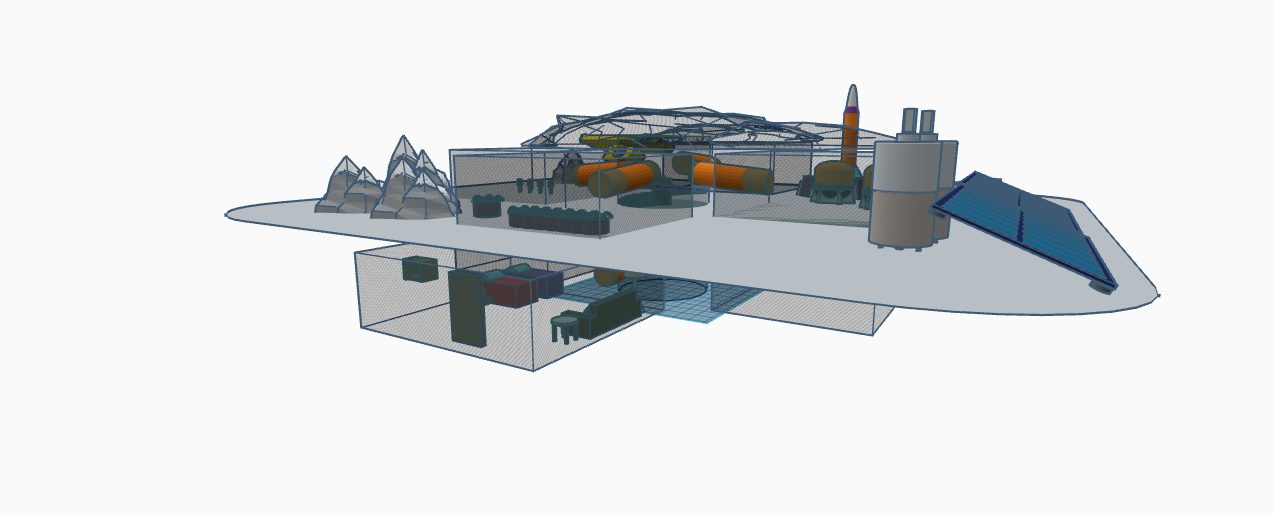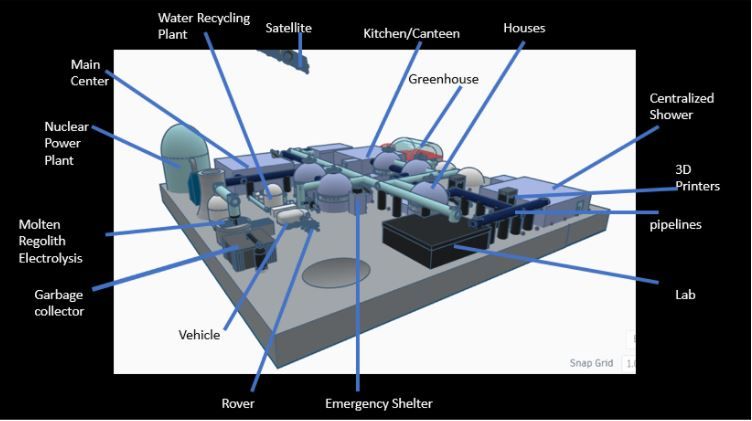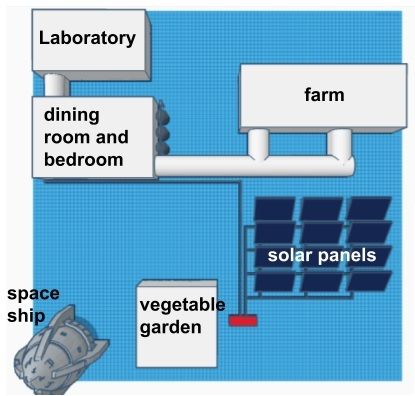Moon Camp Explorers Gallery 2021-2022
In Moon Camp Explorers each team’s mission is to 3D design a complete Moon Camp using Tinkercad. They also have to explain how they will use local resources, protect astronauts from the dangerous of space and describe the living and working facilities.
Team: DREAMOON
Externato Marcelino Champagnat Lisbon Portugal 11 3 / 3
External link for 3d
|
Project description
Our camp would consist of it two cylinders connected with a tube. Each cylinder will be divided into three floors powered by solar energy coming from our lunar panels. There will be a bathroom in the room with two bunks and the passage between floors will be done with a ladder. We would have a robot at our disposal for Moon exploration. Our rocket will be landed next to our base. Our camp has bedrooms, a kitchen, a bathroom, a living room, an experiment room, a computer room to make contact with Earth, a greenhouse and a gym. |
||||
|
Where do you want to build your Moon Camp?
Shackleton crater Why did you choose this location?
The rotation axis of the moon is parallel to the translation axis of Shackelton crater, with a small tilt, which exposes the polar areas to 80% sunlight. These places are called “inner light peaks” and surround Shackelton crater, turning it into a future moon base. But there are also points of internal darkness which means that the components of any asteroid impacting here will turn to hydrogen after a while. How do you plan to build your Mooncamp? Which materials will you use?
We think to build here because we have abundant light and the temperatures are mild. Our plan is to make expeditions to the points of darkness and collect hydrogen to perform electrolysis in the laboratory, the transformation of hydrogen into water. We also plan to use hydrogen to produce oxygen. We will use lunar materials to build our base. |
||||
|
Water
|
Food
|
Electricity
|
Air
|
Protection
|
|
On the moon every astronaut needs at least 2 litres of water per day. Ice water was discovered here, at the lunar poles, below the ground. It needs to be extracted. using a drill and a pipe to move it. When the water starts to run out, the water recycling system on the space station will be used to maintain a water supply. |
We can only take a limited amount of food to the moon, but at some point it will start to run out. On the moon there is plenty of sunshine, so we will have a greenhouse to to grow food, as outside the camp there is no atmosphere or oxygen. |
On the moon there is no wind, so we cannot use wind energy. |
We will use the process of electrolysis to produce oxygen, as well as plants and algae cultures. Algae are small and only need 8m2. Electrolysis is to give energy to water and divided into hydrogen and oxygen. We will also use regolith to get the oxygen. We would heat the moon soil and then filter and store the oxygen. Our camp will have two vacuum doors so you can get in and out so the oxygen doesn’t get out of your shelter. |
Our camp will be protected from falling asteroids, which are very powerful, from solar radiation and harsh weather. |
|
Describe a day on the Moon for one of your Moon Camp astronauts
We wake up at 6am and go to the kitchen for breakfast. We harvest food from the greenhouse and check the safety of our oxygen source. Then we divide the day’s tasks and start working. For example, doing the communications with the space team on Earth. After lunch, we will do the afternoon tasks, such as research or equipment maintenance. Then, we do physical exercise again, take a bath. We end our day checking if our robots are damaged or malfunctioning and sending 2 or 3 robots to explore the moon. At last, we have dinner and go to sleep. |
||||


